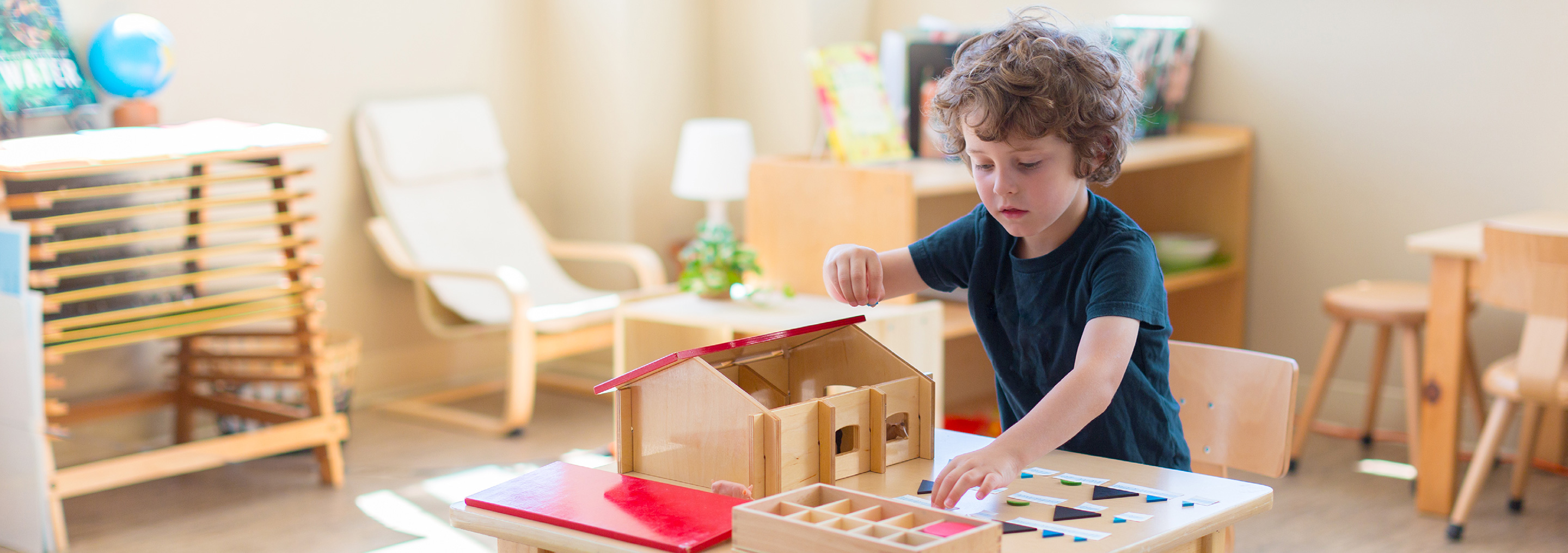- View All
- Topics
- Search
Blog Archive
-
2025 (1)
- January (1)
-
2024 (10)
- December (1)
- October (1)
- September (1)
- August (1)
- July (1)
- June (1)
- April (1)
- March (1)
- January (2)
-
2023 (9)
- September (1)
- August (1)
- July (1)
- June (1)
- May (1)
- April (1)
- March (1)
- February (1)
- January (1)
-
2022 (3)
- December (1)
- November (1)
- September (1)
-
2021 (3)
- November (1)
- March (1)
- February (1)



Montessori Principles for Healthy Sleep Habits
Mention “sleep” to a parent with young children, and you’ll start a big discussion. Many times, desperate for sleep ourselves, we provide our children with sleeping aids (sound machines, swings, screens, etc.) and allow habits that may be doing a disservice to you both, as the primary issue of guiding and supporting your child’s sleep rhythm isn’t being addressed. As we navigate the challenges of ensuring adequate rest for our infants and toddlers, strategies rooted in the Montessori philosophy can guide and support us in fostering healthy sleep habits and our children’s self-regulation.
INFANTS
For infants, getting to know their natural body rhythm and observing their cues is essential. Familiarize yourself with “wake windows” (this is the amount of time your infant should be awake between naps or bedtime sleep) and observe your infant’s body language as he gets closer to this “wake window” closing. Does he begin squirming? Does the skin around his eyebrows start to turn red? Does he begin to rub his eyes? We must also recognize that we cannot make our children sleep; we can only set up the proper environment for sleep and help them learn to put themselves to sleep.
As Montessorians, we foster trust by observing our infants and supporting them as they learn to self-regulate. It is essential to know that children learn to self-regulate by first co-regulating with their caregivers. We can respond to their cries for assistance with the following guidance:
Predictability Fosters Trust: Infants thrive with a stable routine and consistency around sleep. A similar routine should be followed, whether putting your infant down for a nap or sleeping at bedtime. It could be as simple as a diaper, a song, a book, a kiss, and then your infant is laid into their bassinet or floor bed.
Skipping naps or waking babies early from naps can make them irritable and increase the probability of difficulty sleeping at night. Trying to put an overtired infant to sleep can be far more challenging than an infant awake for the appropriate time!
Offer support, but don’t try to do the work for your child. When your infant begins to cry, start with little intervention. A few pats on her bottom or rubs on her back may help her to fall asleep. Observe your infant’s reaction to this support, and make adjustments as your infant grows.
When entering your infant’s sleep area, quietly walk to him and acknowledge that he work while rubbing his back. As he starts to fall asleep, gently remove your hand and pause to observe his following action. Does he continue to fall back to sleep? Does he wake up more? Is he showing signs of hunger? Staying consistent with your sleep and wake routine will continue to give your infant trust in you and his sleep environment.
TODDLERS
Adequate sleep is critical for toddlers’ growth and development and plays a significant role in their mood. Toddlers should get about 11-14 hours of sleep daily (including naps). One of the biggest tips for ensuring your toddler gets adequate sleep is sticking to a consistent nighttime routine and an early bedtime.
An early, consistent bedtime: A toddler going to bed around 7:00 or 7:30 PM tends to be a good time for a child who needs to wake up by 7:00 for school. Adjust times slightly once you’ve worked in getting ready, eating breakfast, and travel time.
A consistent bedtime routine: This can be as simple as bath, dressing, brushing teeth, reading a book, and then lying down in bed. Before your nighttime routine, your child should avoid looking at screens or other over-stimulating activities. Your calming nighttime routine is to let your child’s body know that rest time is coming.
An ideal sleep environment: Your child’s sleep environment should be between 68 and 72 degrees Fahrenheit. The room should be dark to activate the release of melatonin. We encourage using a floor bed versus a crib to allow your child the independence to crawl into and out of bed. Introducing a floor bed during infancy prevents a difficult transition from a crib to a toddler bed.
Build the skill of falling asleep independently. A consistent sleep routine gives your child a foundation of trust, which is needed as they begin to fall asleep independently. After you’ve gone through the steps of your bedtime routine, lay your child on their bed and observe their movements. Do they roll over and begin their rest? Do they show signs of distress requiring a few minutes of reassurance? Remember, young children can self-regulate by initially co-regulating with you.
By embracing Montessori-inspired approaches, parents can play a pivotal role in supporting their children’s healthy sleep habits and fostering self-regulation. From observing cues and establishing routines to creating nurturing sleep environments, Montessori principles offer invaluable guidance in nurturing our children’s well-being.
Happy sleeping!